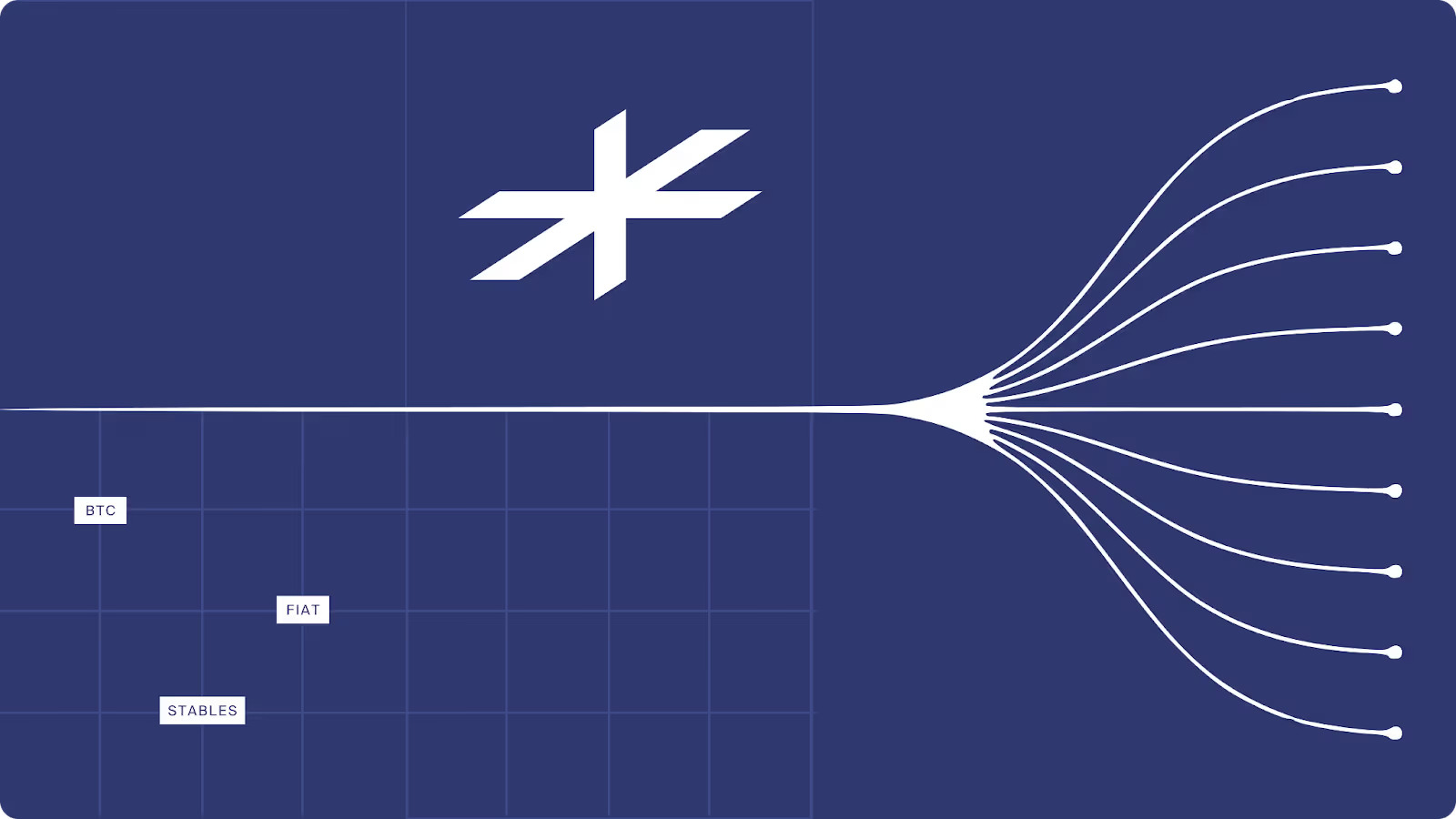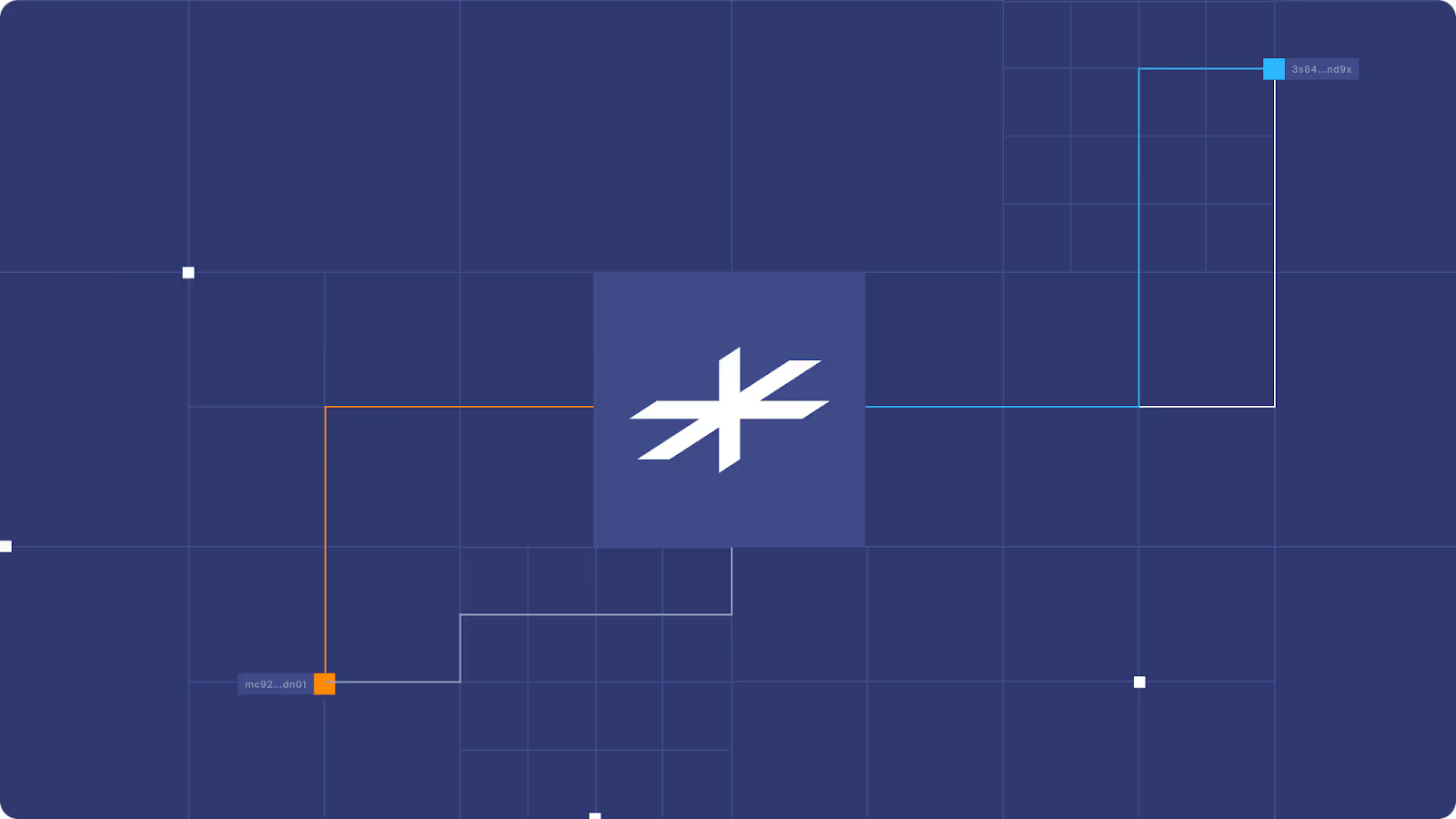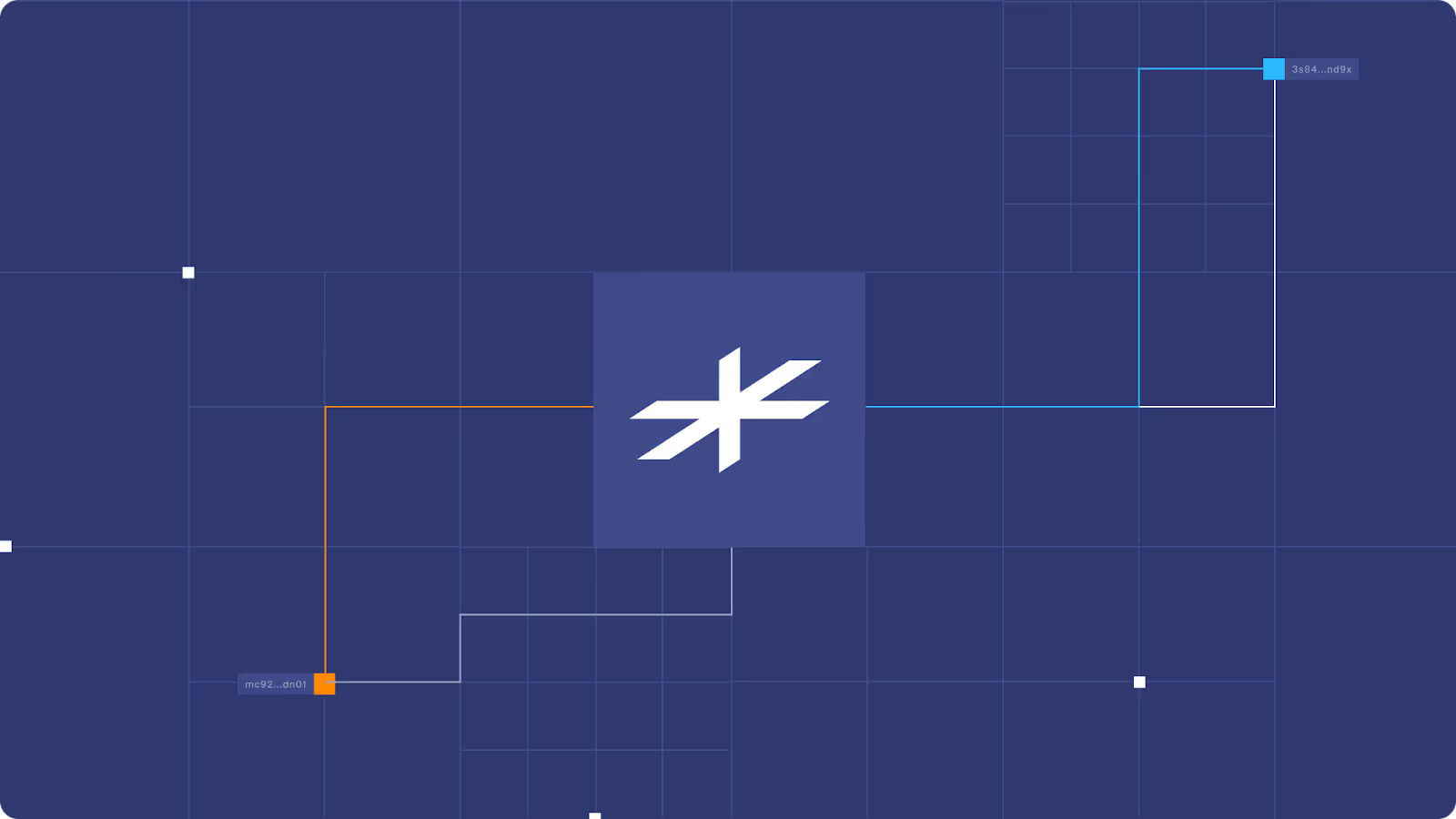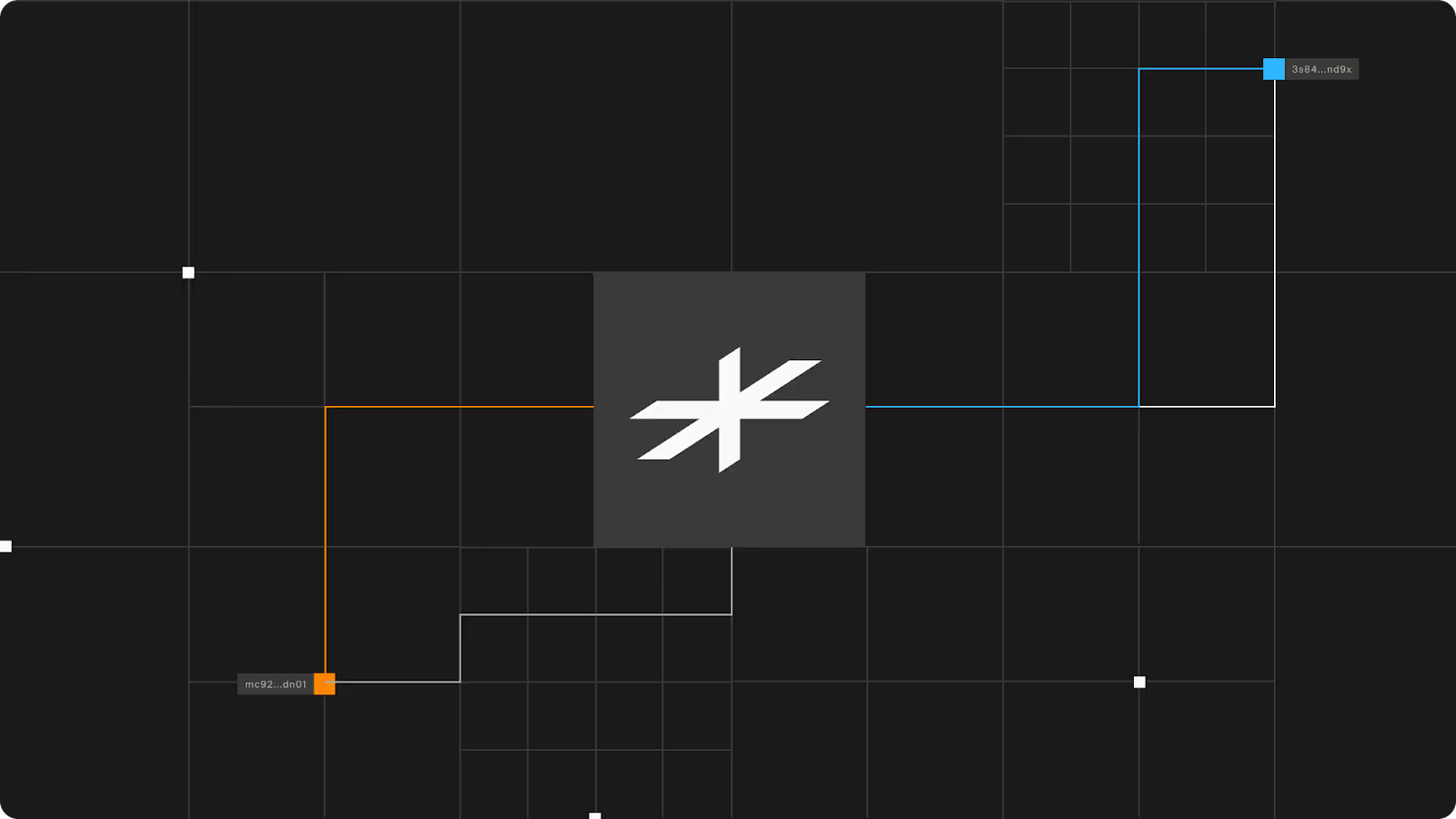/knowledge

Cryptocurrency Payments: A Guide to Adoption and Execution
The global financial landscape is undergoing a profound transformation. Cryptocurrency payments are no longer a niche concept but a burgeoning reality, offering unparalleled efficiency and accessibility. This guide provides a comprehensive framework for understanding, executing, and optimizing your engagement with digital currencies for transactional purposes.
Cryptocurrency Payments: A Guide to Adoption and Execution

Choosing a Crypto Business Bank Account in 2025
As more businesses adopt digital assets, the need for reliable, crypto-friendly banking infrastructure is becoming urgent. But navigating for reliable sources is tricky: the options are expanding, regulatory clarity is improving, and new platforms are emerging that blur the line between fintech, banking, and blockchain.
Choosing a Crypto Business Bank Account in 2025

Integrating Cryptocurrency with Digital Banking
As digital-first banking becomes the norm, institutions are under pressure to offer faster, more transparent, and more inclusive financial services. One of the most significant shifts underway is the integration of cryptocurrency into digital banking infrastructure. No longer a fringe experiment, crypto is now a tool for streamlining payments, expanding access, and unlocking entirely new financial products.
Integrating Cryptocurrency with Digital Banking

Rethinking Cross-Border Payments
Cross-border payments today still ride on outdated rails. SWIFT messaging, intermediary banks, delayed settlements, opaque FX spreads, and double-digit fees are all signs of a global system that predates the internet. For businesses transacting across borders, the costs and delays aren't just inconvenient; they’re systemic blockers to scale.
Rethinking Cross-Border Payments

What Are Web3 Payments? A Guide To The Next Generation of Financial Infrastructure
As the digital economy evolves, so too does the architecture that powers it. Web3 payments, built on decentralized, blockchain-native rails, offer a fundamentally new approach to moving value across the internet. In contrast to legacy payment systems reliant on intermediaries and clearing houses, Web3 payment infrastructure is trust-minimized, programmable, and global by default.
What Are Web3 Payments? A Guide To The Next Generation of Financial Infrastructure

What is Real-Time Payment Infrastructure?
As the global economy is increasingly defined by immediacy, real-time payment infrastructure (RTPI) is the connective tissue behind seamless financial experiences. Whether you're settling a $5 lunch tab or clearing a multimillion-dollar invoice, RTPI makes it possible to move money with the same speed and certainty as sending a text.
What is Real-Time Payment Infrastructure?

Alternatives to Correspondent Banking for Neobanks
The global financial system is in a state of constant evolution, driven by technological advancements, shifting consumer expectations, and an increasingly interconnected world. For neobanks, this dynamic environment presents both unprecedented opportunities and significant challenges, particularly in the realm of international financial transactions. Your ability to navigate this complex landscape will determine your competitive edge and long-term success.
Alternatives to Correspondent Banking for Neobanks

Payment Routing and Smart Retries: Improving Instant Payment Success Rates
In today's digital economy, speed and reliability are not merely advantageous; they are fundamental expectations. Instant payments represent the pinnacle of this demand, offering immediate value transfer and unparalleled convenience. However, the pursuit of instant payment success is fraught with complexities, requiring sophisticated strategies to navigate an intricate ecosystem. Achieving optimal success rates is no longer an option but a strategic imperative for any business aiming to thrive in the modern financial landscape.
Payment Routing and Smart Retries: Improving Instant Payment Success Rates

Stablecoin Invoicing: The Next Evolution in Global Payments
Invoicing shouldn’t be a bottleneck. But for too many businesses, especially those operating globally, it’s exactly that: slow, expensive, and opaque. Stablecoin invoicing offers a radically more efficient alternative: near-instant settlement, low-cost transactions, and global operability without relying on fragile banking rails. For CFOs, operations leaders, and finance teams, stablecoins make it a new frontier in working capital efficiency. In this guide, we’ll break down how stablecoin invoicing works, what problems it solves, and how businesses can start adopting it today.
Stablecoin Invoicing: The Next Evolution in Global Payments

What Business Problems Does Bitcoin Solve?
Bitcoin has emerged as a transformative technology, fundamentally challenging established paradigms in finance and commerce. Its inception was not a mere technological novelty; it was a direct response to tangible, systemic inefficiencies and inequities that plague modern business operations globally. Understanding the practical problems Bitcoin solves is crucial for any forward-thinking enterprise seeking to optimize its processes, reduce costs, and expand its reach in an increasingly digital world. This is not merely about adopting a new payment method; it is about leveraging a decentralized, secure, and transparent protocol to overcome deep-seated obstacles that hinder growth and foster financial exclusion.
What Business Problems Does Bitcoin Solve?

Instant Payments South Africa: Rails, Fees, and the Lightning Network (2025)
South Africa's adoption of Real-Time Payments presents new opportunities for innovation. This article explores the country's payment rails, regulatory framework, associated fees, and other key considerations for building modern financial products in the region.
Instant Payments South Africa: Rails, Fees, and the Lightning Network (2025)

Instant Payments Ukraine: Rails, Fees, and the Lightning Network (2025)
Ukraine's real-time payment system is rapidly developing. This article examines the country's payment infrastructure, including its specific rails, the regulatory framework governing transactions, associated fees, and the operational model for businesses looking to integrate.
Instant Payments Ukraine: Rails, Fees, and the Lightning Network (2025)

Oman Real Time Payments: Rails, Fees, and the Lightning Network (2025)
Oman's financial system is modernizing with the introduction of Real-Time Payments (RTP). This article examines the country's new payment infrastructure, including its underlying rails, regulatory framework, associated fees, and the opportunities this presents for financial technology development.
Oman Real Time Payments: Rails, Fees, and the Lightning Network (2025)

Instant Payments Turkey: Rails, Fees, and the Lightning Network (2025)
Turkey's real-time payment system is rapidly advancing. This article explores the country's payment infrastructure, covering its primary rails, the regulatory framework for transactions, associated fees, and the opportunities for businesses operating within the region.
Instant Payments Turkey: Rails, Fees, and the Lightning Network (2025)

Instant Payments Vietnam: Rails, Fees, and the Lightning Network (2025)
Vietnam's real-time payment system is rapidly expanding. This article examines the country's instant payment infrastructure, including its primary payment rails, the regulatory framework, associated transaction fees, and the opportunities for businesses operating in the region.
Instant Payments Vietnam: Rails, Fees, and the Lightning Network (2025)

Instant Payments Russia: Rails, Fees, and the Lightning Network (2025)
Russia's real-time payments system presents unique opportunities and challenges. This article examines the country's payment rails, regulatory framework, transaction fees, and the technical requirements for integration, offering a guide for businesses operating in the region.
Instant Payments Russia: Rails, Fees, and the Lightning Network (2025)

Instant Payments Portugal: Rails, Fees, and the Lightning Network (2025)
Portugal's real-time payment network offers new possibilities for commerce. This guide covers the essential details for integration, exploring the country's payment rails, the governing regulations, typical fee structures, and other important technical factors.
Instant Payments Portugal: Rails, Fees, and the Lightning Network (2025)

Instant Payments Taiwan: Rails, Fees, and the Lightning Network (2025)
Taiwan's real-time payments system offers significant opportunities for businesses operating in the region. This guide provides a technical overview of the country's payment rails, regulatory requirements, transaction fees, and other details for building payment solutions.
Instant Payments Taiwan: Rails, Fees, and the Lightning Network (2025)

Instant Payments Sri Lanka: Rails, Fees, and the Lightning Network (2025)
Sri Lanka's adoption of real-time payments offers significant opportunities. This guide explores the country's payment infrastructure, covering its specific rails, the governing regulations, transaction fees, and other key operational details for building modern financial products.
Instant Payments Sri Lanka: Rails, Fees, and the Lightning Network (2025)

Instant Payments Thailand: Rails, Fees, and the Lightning Network (2025)
Thailand's real-time payment system is rapidly expanding. This article examines the country's payment infrastructure, including its primary rails, regulatory framework, associated fees, and other details for businesses building financial products for the Thai market.
Instant Payments Thailand: Rails, Fees, and the Lightning Network (2025)

Instant Payments Panama: Rails, Fees, and the Lightning Network (2025)
As Panama adopts real-time payments, businesses must understand the new infrastructure. This guide covers the essential details of the country's payment rails, current regulations, fee structures, and what's needed for successful implementation.
Instant Payments Panama: Rails, Fees, and the Lightning Network (2025)

Instant Payments Sweden: Rails, Fees, and the Lightning Network (2025)
Sweden's real-time payment network provides instant transactions across the country. This guide is for payment professionals, covering the system's payment rails, regulatory environment, fee structures, and other key operational details for building financial products in Sweden.
Instant Payments Sweden: Rails, Fees, and the Lightning Network (2025)

Instant Payments Serbia: Rails, Fees, and the Lightning Network (2025)
Serbia's real-time payment system presents new opportunities for financial technology. This article examines the country's payment rails, regulatory framework, associated fees, and the technical requirements for integration, offering a guide for businesses operating in the region.
Instant Payments Serbia: Rails, Fees, and the Lightning Network (2025)

Instant Payments Philippines: Rails, Fees, and the Lightning Network (2025)
The Philippines is rapidly adopting real-time payments, changing how businesses operate. This guide examines the country's payment rails, regulatory framework, associated fees, and other key considerations for building financial products in this dynamic market.
Instant Payments Philippines: Rails, Fees, and the Lightning Network (2025)

Instant Payments Uganda: Rails, Fees, and the Lightning Network (2025)
Uganda's payment systems are rapidly modernizing with the introduction of real-time payments. This article examines the country's new payment rails, the regulatory framework governing them, associated transaction fees, and the opportunities for fintech innovation in the region.
Instant Payments Uganda: Rails, Fees, and the Lightning Network (2025)

Instant Payments Qatar: Rails, Fees, and the Lightning Network (2025)
Qatar's adoption of real-time payments is reshaping its financial infrastructure. This guide explores the new payment rails, the regulatory framework, associated fees, and the technical requirements for integration, offering a complete overview for technology and finance leaders.
Instant Payments Qatar: Rails, Fees, and the Lightning Network (2025)

Instant Payments Venezuela: Rails, Fees, and the Lightning Network (2025)
Venezuela's real-time payment systems are rapidly developing. This article examines the country's payment rails, regulatory framework, associated fees, and other key operational details for businesses and developers integrating with the local financial infrastructure.
Instant Payments Venezuela: Rails, Fees, and the Lightning Network (2025)

Instant Payments Norway: Rails, Fees, and the Lightning Network (2025)
Norway's real-time payment system presents distinct opportunities for businesses. This article examines the country's instant payment infrastructure, covering its primary payment rails, the regulatory framework, associated transaction fees, and other key operational details for developers and payment leaders.
Instant Payments Norway: Rails, Fees, and the Lightning Network (2025)

Instant Payments Pakistan: Rails, Fees, and the Lightning Network (2025)
Pakistan's real-time payment infrastructure is rapidly developing. This article provides a technical overview of the country's payment rails, regulatory policies, fee structures, and other key details for integrating with these modern financial systems.
Instant Payments Pakistan: Rails, Fees, and the Lightning Network (2025)

Instant Payments Jamaica: Rails, Fees, and the Lightning Network (2025)
Jamaica's financial system is advancing with the introduction of Real-Time Payments. This article provides a technical guide to the new infrastructure, covering payment rails, the regulatory environment, fee structures, and other key considerations for building payment solutions.
Instant Payments Jamaica: Rails, Fees, and the Lightning Network (2025)

Instant Payments Mauritius: Rails, Fees, and the Lightning Network (2025)
Mauritius's move to real-time payments presents new opportunities. This article explores the country's payment rails, regulatory environment, fee structures, and other details for businesses operating within this updated financial system.
Instant Payments Mauritius: Rails, Fees, and the Lightning Network (2025)

Instant Payments Kuwait: Rails, Fees, and the Lightning Network (2025)
Kuwait's adoption of Real-Time Payments presents new opportunities for businesses. This guide examines the country's payment infrastructure, including the specific rails, associated regulations, transaction fees, and other key operational details for building modern financial products.
Instant Payments Kuwait: Rails, Fees, and the Lightning Network (2025)

Hong Kong Instant Payments: Rails, Fees, and the Lightning Network (2025)
Hong Kong's real-time payment system presents distinct opportunities for businesses operating in the region. This article explores the city's payment rails, regulatory framework, transaction fees, and other operational details for building and scaling payment solutions.
Hong Kong Instant Payments: Rails, Fees, and the Lightning Network (2025)

Finland Instant Payments: Rails, Fees, and the Lightning Network (2025)
Finland's real-time payment network is expanding, creating new possibilities for businesses. This article explores the system's core components, including payment rails, governing regulations, transaction fees, and other details for integrating instant payment solutions.
Finland Instant Payments: Rails, Fees, and the Lightning Network (2025)

Instant Payments Luxembourg: Rails, Fees, and the Lightning Network (2025)
Luxembourg is modernizing its financial infrastructure with Real-Time Payments. This article examines the country's payment systems, exploring the specific rails, regulatory frameworks, associated fees, and the technical considerations for building on these new financial networks.
Instant Payments Luxembourg: Rails, Fees, and the Lightning Network (2025)

Instant Payments Italy: Rails, Fees, and the Lightning Network (2025)
Italy's real-time payment systems are rapidly advancing. This article examines the country's instant payment rails, the regulatory framework, associated transaction fees, and other key operational details for businesses building payment solutions in the region.
Instant Payments Italy: Rails, Fees, and the Lightning Network (2025)

Georgia Instant Payments: Rails, Fees, and the Lightning Network (2025)
Georgia is advancing its financial infrastructure with real-time payments. This overview covers the essential components for technology and payments leaders, including the country's payment rails, specific regulations, associated fees, and key integration details.
Georgia Instant Payments: Rails, Fees, and the Lightning Network (2025)

Instant Payments Moldova: Rails, Fees, and the Lightning Network (2025)
Moldova is modernizing its financial infrastructure with the introduction of real-time payments. This article examines the country's new payment rails, the associated regulatory framework, transaction fees, and the technical requirements for integration for businesses and developers.
Instant Payments Moldova: Rails, Fees, and the Lightning Network (2025)

Instant Payments Lebanon: Rails, Fees, and the Lightning Network (2025)
Real-Time Payments are being introduced in Lebanon, offering new operational advantages. This overview covers the system's core components: payment rails, regulatory requirements, transaction fees, and other key considerations for technical and financial leaders in the region.
Instant Payments Lebanon: Rails, Fees, and the Lightning Network (2025)

Instant Payments Myanmar: Rails, Fees, and the Lightning Network (2025)
Myanmar's payment systems are rapidly modernizing. This article examines the country's real-time payment rails, including the regulatory framework, associated fees, transaction limits, and technical specifications for integration, providing a guide for building financial products in the region.
Instant Payments Myanmar: Rails, Fees, and the Lightning Network (2025)

Instant Payments Jordan: Rails, Fees, and the Lightning Network (2025)
Jordan's move to real-time payments presents new opportunities. This article examines the country's payment rails, regulatory framework, associated fees, and the technical requirements for integration, offering a guide for building compliant and efficient payment systems.
Instant Payments Jordan: Rails, Fees, and the Lightning Network (2025)

Ghana Instant Payments: Rails, Fees, and the Lightning Network (2025)
Ghana's real-time payment systems are rapidly advancing. This guide examines the country's payment rails, regulatory framework, and associated fees, offering a comprehensive overview for businesses operating in the region and building financial technology products.
Ghana Instant Payments: Rails, Fees, and the Lightning Network (2025)

Instant Payments Iran: Rails, Fees, and the Lightning Network (2025)
Iran's real-time payment infrastructure offers distinct opportunities for global fintech operations. This article examines the country's payment rails, regulatory framework, transaction fees, and the technical specifications necessary for successful integration into the system.
Instant Payments Iran: Rails, Fees, and the Lightning Network (2025)

Instant Payments Malta: Rails, Fees, and the Lightning Network (2025)
Malta's move towards real-time payments presents new opportunities and challenges for financial technology. This article examines the country's instant payment rails, the associated regulatory framework, transaction fees, and the technical requirements for integration and operation.
Instant Payments Malta: Rails, Fees, and the Lightning Network (2025)

Estonia Instant Payments: Rails, Fees, and the Lightning Network (2025)
This guide to Estonia's real-time payment system details the country's financial infrastructure. We cover the available payment rails, governing regulations, associated fees, and other technical considerations for integrating with the network.
Estonia Instant Payments: Rails, Fees, and the Lightning Network (2025)

Fiji Instant Payments: Rails, Fees, and the Lightning Network (2025)
Fiji's adoption of real-time payments is reshaping its financial systems. This article provides a technical and operational guide, covering the country's payment rails, the specific regulations involved, fee structures, and other key considerations for implementation.
Fiji Instant Payments: Rails, Fees, and the Lightning Network (2025)

Dubai Real Time Payments: Rails, Fees, and the Lightning Network (2025)
Real-time payments are transforming Dubai's financial sector. This guide explores the essential details for integration, covering the payment rails, regulatory environment, transaction fees, and technical requirements for operating within this advanced financial infrastructure.
Dubai Real Time Payments: Rails, Fees, and the Lightning Network (2025)

Instant Payments Israel: Rails, Fees, and the Lightning Network (2025)
Israel's move to real-time payments is reshaping its financial infrastructure. This article examines the new system, covering the technical details of its payment rails, the associated regulatory framework, fee structures, and the possibilities for financial technology development.
Instant Payments Israel: Rails, Fees, and the Lightning Network (2025)

Instant Payments Iraq: Rails, Fees, and the Lightning Network (2025)
As Iraq adopts Real-Time Payments, understanding the new financial infrastructure is essential. This overview covers the payment rails, governing regulations, fee structures, and other details for businesses integrating with the country's payment systems.
Instant Payments Iraq: Rails, Fees, and the Lightning Network (2025)

Instant Payments Morocco: Rails, Fees, and the Lightning Network (2025)
Morocco is advancing its real-time payment infrastructure. This guide explores the country's payment rails, regulatory environment, transaction fees, and technical specifications for building and integrating modern payment solutions in the region.
Instant Payments Morocco: Rails, Fees, and the Lightning Network (2025)

Instant Payments Japan: Rails, Fees, and the Lightning Network (2025)
Japan's real-time payments system is rapidly advancing. This article examines the country's key payment rails, the regulatory framework governing them, associated transaction fees, and the technical standards involved, providing a comprehensive overview for technology and payments leaders.
Instant Payments Japan: Rails, Fees, and the Lightning Network (2025)

Instant Payments Nepal: Rails, Fees, and the Lightning Network (2025)
Nepal is adopting real-time payments, creating new possibilities in financial technology. This article examines the country's payment rails, regulatory environment, transaction fees, and other key considerations for building and integrating modern payment systems.
Instant Payments Nepal: Rails, Fees, and the Lightning Network (2025)

Instant Payments Maldives: Rails, Fees, and the Lightning Network (2025)
The Maldives is advancing its payments infrastructure with the introduction of real-time systems. This article examines the country's new payment rails, the associated regulatory framework, transaction fees, and the opportunities for financial technology development.
Instant Payments Maldives: Rails, Fees, and the Lightning Network (2025)

Dominican Republic Instant Payments: Rails, Fees, and the Lightning Network (2025)
The Dominican Republic is advancing its financial infrastructure with Real-Time Payments. This article examines the country's payment rails, regulatory framework, associated fees, and the opportunities this presents for financial technology innovation.
Dominican Republic Instant Payments: Rails, Fees, and the Lightning Network (2025)

Egypt Instant Payments: Rails, Fees, and the Lightning Network (2025)
Egypt's adoption of Real-Time Payments is advancing its financial infrastructure. This article explores the core components for businesses and developers, covering payment rails, the regulatory environment, transaction fees, and other key integration details for building modern solutions.
Egypt Instant Payments: Rails, Fees, and the Lightning Network (2025)

Instant Payments New Zealand: Rails, Fees, and the Lightning Network (2025)
New Zealand is preparing for real-time payments, a significant development for its financial infrastructure. This article examines the new payment rails, the associated regulatory framework, transaction fees, and the opportunities for financial technology innovation.
Instant Payments New Zealand: Rails, Fees, and the Lightning Network (2025)

Instant Payments Kenya: Rails, Fees, and the Lightning Network (2025)
Kenya's real-time payment systems are rapidly expanding. This article examines the country's payment rails, the regulatory framework governing them, associated transaction fees, and the technical considerations for integration, providing a guide for building financial products in the region.
Instant Payments Kenya: Rails, Fees, and the Lightning Network (2025)

France Real Time Payments: Rails, Fees, and the Lightning Network (2025)
Instant payments are gaining traction in France. This article offers a guide to the country's payment infrastructure, covering the rails, regulations, fee structures, and what businesses need to know to get started with implementation.
France Real Time Payments: Rails, Fees, and the Lightning Network (2025)

Instant Payments Malaysia: Rails, Fees, and the Lightning Network (2025)
Real-time payments are reshaping finance in Malaysia. For those building payment solutions, this article covers the core payment rails, the regulatory environment, fee structures, and other technical details necessary for successful product development and integration.
Instant Payments Malaysia: Rails, Fees, and the Lightning Network (2025)

Greece Instant Payments: Rails, Fees, and the Lightning Network (2025)
Instant payments are reshaping Greece's financial infrastructure. This article examines the country's payment rails, regulatory environment, fee structures, and technical specifications, offering a guide for building modern payment systems in the region.
Greece Instant Payments: Rails, Fees, and the Lightning Network (2025)

Ethiopia Instant Payments: Rails, Fees, and the Lightning Network (2025)
Ethiopia is modernizing its financial infrastructure with Real-Time Payments. This article examines the country's payment rails, the regulatory framework governing them, associated transaction fees, and the opportunities for fintech innovation.
Ethiopia Instant Payments: Rails, Fees, and the Lightning Network (2025)

Instant Payments Macedonia: Rails, Fees, and the Lightning Network (2025)
Real-time payments are expanding in Macedonia, creating new possibilities for businesses. This article covers the essential details: the payment rails, current regulations, transaction fees, and other technical considerations for developers and payment professionals.
Instant Payments Macedonia: Rails, Fees, and the Lightning Network (2025)

Denmark Instant Payments: Rails, Fees, and the Lightning Network (2025)
Denmark's Real-Time Payments system provides a sophisticated infrastructure for instant transactions. This guide explores the country's payment rails, the regulatory framework, associated fees, and other operational details for building payment solutions in the region.
Denmark Instant Payments: Rails, Fees, and the Lightning Network (2025)

Instant Payments Spain: Rails, Fees, and the Lightning Network (2025)
Spain's real-time payment system presents distinct opportunities for businesses. This guide examines the country's instant payment infrastructure, including its primary rails, the regulatory framework, associated transaction fees, and other key operational details for payment leaders.
Instant Payments Spain: Rails, Fees, and the Lightning Network (2025)

Croatia Instant Payments: Rails, Fees, and the Lightning Network (2025)
Croatia's move to real-time payments presents new opportunities for businesses. This article examines the country's instant payment system, covering its underlying payment rails, the regulatory framework, associated fees, and technical specifications for integration.
Croatia Instant Payments: Rails, Fees, and the Lightning Network (2025)

Cambodia Real Time Payments: Rails, Fees, and the Lightning Network (2025)
Cambodia's real-time payment systems are rapidly developing. This article examines the country's payment infrastructure, including its core rails, regulatory framework, and associated fee structures, offering a guide for building financial products in the region.
Cambodia Real Time Payments: Rails, Fees, and the Lightning Network (2025)

Mexico Real Time Payments: Rails, Fees, and the Lightning Network (2025)
Mexico's real-time payment system presents new possibilities for businesses. This overview covers the essential details you need to know, from the underlying payment rails and regulatory requirements to transaction fees and market-specific operational considerations.
Mexico Real Time Payments: Rails, Fees, and the Lightning Network (2025)

Cyprus Instant Payments: Rails, Fees, and the Lightning Network (2025)
Real-time payments are now active in Cyprus, introducing new possibilities for financial services. This article provides a technical guide to the system, covering the payment rails, regulatory framework, transaction fees, and other key operational details.
Cyprus Instant Payments: Rails, Fees, and the Lightning Network (2025)

Bangladesh Real Time Payments: Rails, Fees, and the Lightning Network (2025)
Bangladesh's move towards real-time payments presents new opportunities. This article examines the country's payment infrastructure, exploring its core rails, regulatory framework, associated fees, and the technical requirements for integration.
Bangladesh Real Time Payments: Rails, Fees, and the Lightning Network (2025)

Austria Instant Payments: Rails, Fees, and the Lightning Network (2025)
Austria's move to real-time payments presents new opportunities for financial technology. This article examines the country's payment infrastructure, including its specific rails, the regulatory framework, associated transaction fees, and the technical requirements for integration.
Austria Instant Payments: Rails, Fees, and the Lightning Network (2025)

China Instant Payments: Rails, Fees, and the Lightning Network (2025)
China's real-time payment network represents a significant development in financial technology. This article provides a detailed look at its payment rails, the specific regulations that govern it, typical fee structures, and other technical considerations for implementation.
China Instant Payments: Rails, Fees, and the Lightning Network (2025)

Instant Payments Hungary: Rails, Fees, and the Lightning Network (2025)
Hungary's instant payment system offers significant opportunities for businesses. This article examines the country's real-time payment rails, the associated regulatory framework, transaction fees, and other key operational details for building financial products in the region.
Instant Payments Hungary: Rails, Fees, and the Lightning Network (2025)

Bahrain Real Time Payments: Rails, Fees, and the Lightning Network (2025)
Bahrain's move to Real-Time Payments is reshaping its financial sector. This article provides a technical overview of the system, exploring its payment rails, regulatory framework, fee structures, and what developers need to know for integration.
Bahrain Real Time Payments: Rails, Fees, and the Lightning Network (2025)

Algeria Instant Payments: Rails, Fees, and the Lightning Network (2025)
Algeria is modernizing its financial infrastructure with Real-Time Payments. This overview details the country's payment rails, the associated regulations, fee structures, and the technical specifications for building new financial products on this system.
Algeria Instant Payments: Rails, Fees, and the Lightning Network (2025)

Instant Payments Netherlands: Rails, Fees, and the Lightning Network (2025)
Real-time payments are transforming the Netherlands' financial infrastructure. This article examines the country's payment rails, current regulations, and fee structures, providing a comprehensive overview for building and integrating modern financial products in the region.
Instant Payments Netherlands: Rails, Fees, and the Lightning Network (2025)

Bulgaria Instant Payments: Rails, Fees, and the Lightning Network (2025)
Bulgaria's real-time payment infrastructure presents new possibilities for fintech innovation. This guide covers the essential details for integration, including an analysis of the country's payment rails, governing regulations, transaction fees, and other key operational aspects.
Bulgaria Instant Payments: Rails, Fees, and the Lightning Network (2025)

Cuba Real Time Payments: Rails, Fees, and the Lightning Network (2025)
Instant payment systems are arriving in Cuba, creating a new foundation for financial services. This article explores the island's emerging payment rails, its unique regulatory environment, associated fee structures, and the implications for fintech development.
Cuba Real Time Payments: Rails, Fees, and the Lightning Network (2025)

Instant Payments Romania: Rails, Fees, and the Lightning Network (2025)
Romania's adoption of real-time payments introduces new possibilities for businesses. This article examines the country's instant payment system, covering its payment rails, the regulatory framework, associated fees, and technical specifications for integration.
Instant Payments Romania: Rails, Fees, and the Lightning Network (2025)

Real-Time Payments Canada: Rails, Fees, and the Lightning Network (2025)
The introduction of Real-Time Payments marks a significant development for Canada's financial infrastructure. This article explores the new payment rails, the regulatory framework, fee structures, and the technical details relevant to financial institutions and developers.
Real-Time Payments Canada: Rails, Fees, and the Lightning Network (2025)

Albania Instant Payments: Rails, Fees, and the Lightning Network (2025)
As Albania implements real-time payments, understanding the new financial infrastructure is important for innovation. This article explores the system's payment rails, governing regulations, fee structures, and other technical details for building on the new network.
Albania Instant Payments: Rails, Fees, and the Lightning Network (2025)

Argentina Real Time Payments: Rails, Fees, and the Lightning Network (2025)
Argentina's real-time payments system is advancing quickly. This article provides a guide to its payment rails, regulatory framework, fee structures, and other key considerations for businesses operating in the country.
Argentina Real Time Payments: Rails, Fees, and the Lightning Network (2025)

Saudi Arabia Instant Payments: Rails, Fees, and the Lightning Network (2025)
Saudi Arabia's adoption of real-time payments is reshaping its financial infrastructure. This article examines the system's core components, including its payment rails, regulatory framework, transaction fees, and what businesses need to know for successful integration.
Saudi Arabia Instant Payments: Rails, Fees, and the Lightning Network (2025)

Azerbaijan Instant Payments: Rails, Fees, and the Lightning Network (2025)
Azerbaijan's real-time payment network offers new possibilities for financial technology. This guide examines the system's payment rails, regulatory framework, fee structures, and technical standards for developers and businesses operating within the country.
Azerbaijan Instant Payments: Rails, Fees, and the Lightning Network (2025)

Real-Time Payments Australia: Rails, Fees, and the Lightning Network (2025)
Australia's real-time payments network is a foundational element of modern finance. This article examines its core components, including the payment rails, regulatory landscape, fee structures, and what they mean for building financial products.
Real-Time Payments Australia: Rails, Fees, and the Lightning Network (2025)

Real-Time Payments USA: Rails, Fees, and the Lightning Network (2025)
The adoption of real-time payments is accelerating across the United States. This article explores the core components of this financial evolution, covering the available payment rails, the regulatory environment, transaction fees, and their implications for modern businesses.
Real-Time Payments USA: Rails, Fees, and the Lightning Network (2025)

Instant Payments Ireland: Rails, Fees, and the Lightning Network (2025)
Instant financial transactions are now standard in Ireland. This guide explores the architecture of the country's Real-Time Payments network, including its payment rails, the governing regulations, typical fee structures, and integration details for developers.
Instant Payments Ireland: Rails, Fees, and the Lightning Network (2025)

Colombia Instant Payments: Rails, Fees, and the Lightning Network (2025)
Colombia's real-time payments system is rapidly advancing. This article examines the country's payment infrastructure, including its primary rails, the regulatory framework, associated fees, and the technical requirements for integration, providing a guide for businesses operating in the region.
Colombia Instant Payments: Rails, Fees, and the Lightning Network (2025)

Instant Payments Belgium: Rails, Fees, and the Lightning Network (2025)
Belgium's move to instant payments presents new opportunities and technical considerations. This article examines the country's real-time payment rails, the regulatory framework, associated fees, and the operational details for implementation.
Instant Payments Belgium: Rails, Fees, and the Lightning Network (2025)

Real Time Payments India: Rails, Fees, and the Lightning Network (2025)
India's real-time payments system is a model for global finance. This article examines the country's payment rails, regulatory framework, and associated fees, providing a technical guide to one of the world's most advanced payment infrastructures.
Real Time Payments India: Rails, Fees, and the Lightning Network (2025)

Instant Payments Switzerland: Rails, Fees, and the Lightning Network (2025)
Switzerland's adoption of real-time payments introduces new opportunities and technical considerations for businesses. This article explores the country's instant payment system, detailing its payment rails, the regulatory framework, associated fees, and what integration entails for developers.
Instant Payments Switzerland: Rails, Fees, and the Lightning Network (2025)

Bhutan Instant Payments: Rails, Fees, and the Lightning Network (2025)
Bhutan's adoption of real-time payments creates new possibilities in financial technology. This article provides a technical and regulatory overview, covering the country's payment rails, governing policies, fee structures, and integration specifications.
Bhutan Instant Payments: Rails, Fees, and the Lightning Network (2025)

Indonesia Real Time Payments: Rails, Fees, and the Lightning Network (2025)
Indonesia's real-time payments system is rapidly expanding. This article examines the key components for businesses operating in the region, including available payment rails, the regulatory framework, associated fees, and other operational details for successful integration.
Indonesia Real Time Payments: Rails, Fees, and the Lightning Network (2025)

Real-Time Payments UK: Rails, Fees, and the Lightning Network (2025)
Instant transactions are the standard in the UK, powered by sophisticated real-time payment systems. This overview breaks down the core components, including the different payment rails, the regulatory framework, transaction fees, and other operational details for integration.
Real-Time Payments UK: Rails, Fees, and the Lightning Network (2025)

Instant Payments Europe: Rails, Fees, and the Lightning Network (2025)
Instant payments are fundamentally changing European commerce. This article explores the continent's real-time payment systems, from the underlying rails and regulatory frameworks to transaction fees and the future of financial technology built upon them.
Instant Payments Europe: Rails, Fees, and the Lightning Network (2025)

Brazil Real-Time Payments: Rails, Fees, and the Lightning Network (2025)
Brazil's real-time payment system has transformed its financial sector. This article examines the country's payment rails, the regulatory framework, associated fees, and the technical requirements for integration, offering a guide for businesses operating in the region.
Brazil Real-Time Payments: Rails, Fees, and the Lightning Network (2025)

Unlocking Smart Contracts on Bitcoin: DLCs, Covenants, and L2s Explained
Bitcoin, often recognized primarily as digital gold, possesses a far greater potential than simply a store of value or a medium of exchange. Its underlying technology is steadily evolving to support a robust ecosystem of decentralized applications and programmable money.
Unlocking Smart Contracts on Bitcoin: DLCs, Covenants, and L2s Explained

Unlocking Global Business Potential: A Guide to Multi-Currency Accounts
Multi-currency accounts unlock seamless management of global funds from one place—eliminating high fees and delays that hold businesses back. Now imagine combining that flexibility with the speed and efficiency of the Bitcoin Lightning Network. Together, they open the door to instant, low-cost payments across borders—built for the next century of money. In this guide, we’ll explore how multi-currency accounts and Lightspark’s infrastructure can help your business move faster, cut costs, and stay ahead in the digital economy.
Unlocking Global Business Potential: A Guide to Multi-Currency Accounts

Blockchain for Enterprise: Strategic Applications and Implementations For Banks
The financial industry stands at the precipice of a profound transformation, driven by technological advancements. Among these, blockchain technology has emerged as a particularly potent force, poised to redefine how banks operate, interact, and innovate. What exactly is enterprise blockchain, and how is it strategically reshaping the banking sector?
Blockchain for Enterprise: Strategic Applications and Implementations For Banks

Is Crypto Legal in Taiwan? Regulations & Compliance in 2025
Navigating the legal landscape of cryptocurrency in Taiwan requires a deep understanding of its evolving regulations. This article explores the compliance requirements, regulatory framework, historical context, and future outlook for digital assets in the region.
Is Crypto Legal in Taiwan? Regulations & Compliance in 2025

Is Crypto Legal in Panama? Regulations & Compliance in 2025
Panama's stance on cryptocurrency is a topic of significant interest for fintech leaders. This article explores the evolving legal landscape, delving into current regulations, compliance requirements, and the historical context shaping the nation's approach to digital assets.

